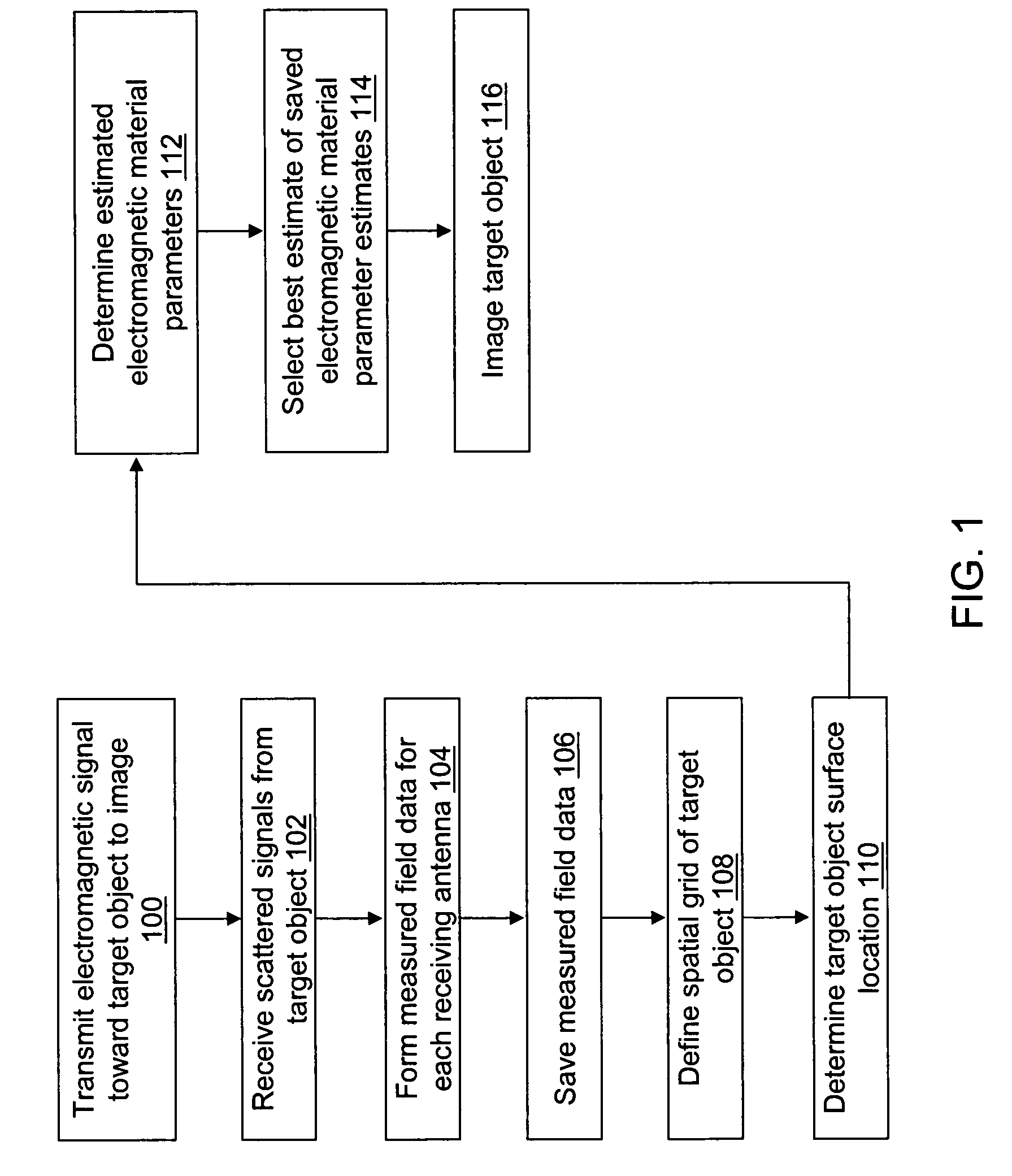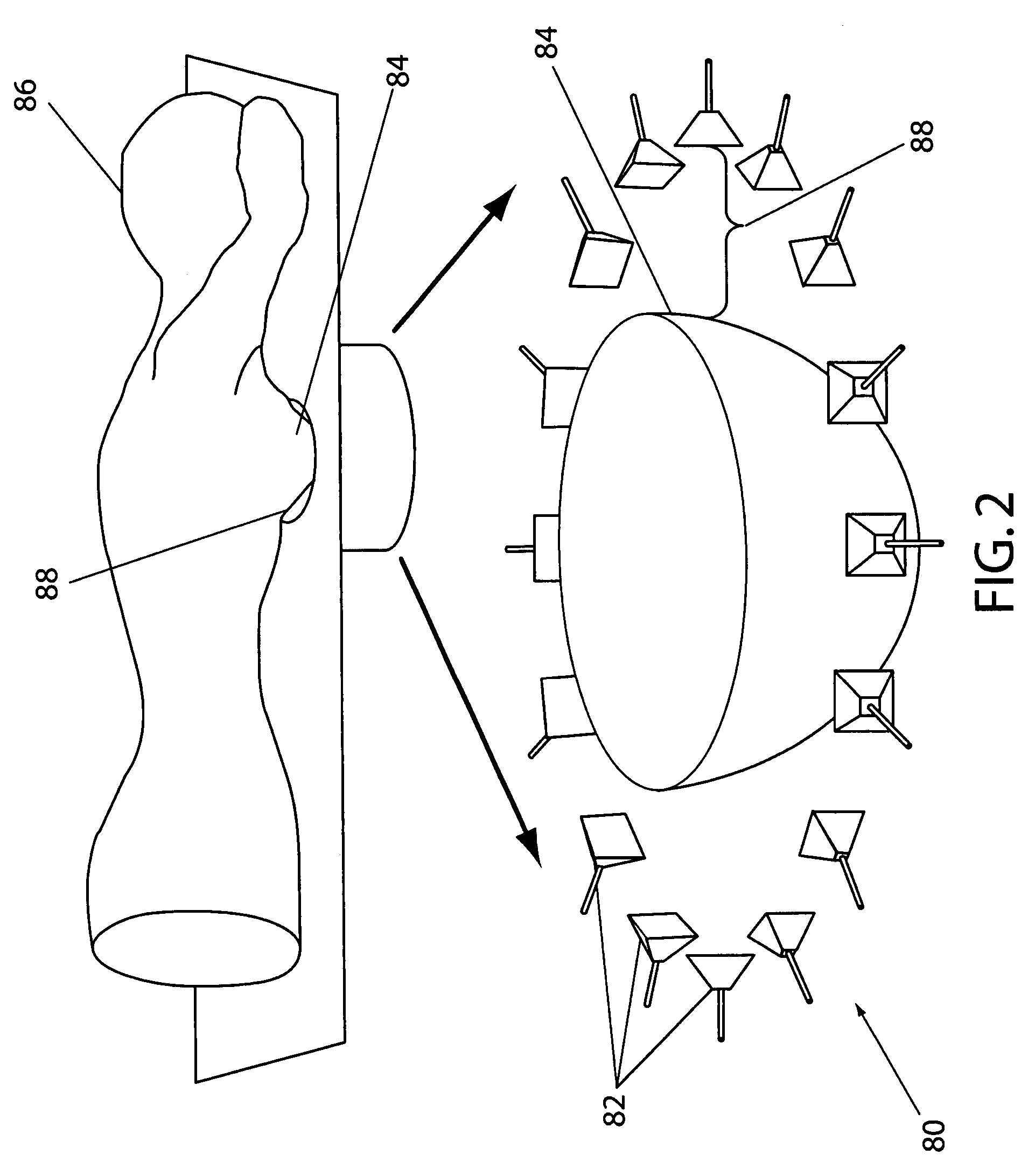Time domain inverse scattering techniques for use in microwave imaging
a microwave imaging and time domain technology, applied in the field of imaging, can solve the problems of x-ray mammography, high false positive and false negative rate, and painful breast compression, and achieve the effect of minimizing a cost function and accurate tumor localization
- Summary
- Abstract
- Description
- Claims
- Application Information
AI Technical Summary
Benefits of technology
Problems solved by technology
Method used
Image
Examples
Embodiment Construction
[0026]Breast carcinomas act as significant microwave scatterers due to their large dielectric-properties contrast with the surrounding tissue. Data in published literature suggest that the malignant-to-normal breast tissue contrast in dielectric constant, and conductivity, is between 2:1 and 10:1, depending on the density of the normal tissue. The higher dielectric properties of malignant breast tissue arise, in part, from increased protein hydration and a breakdown of cell membranes due to necrosis. The contrast ratio does not vary significantly with tumor age, which suggests the potential for detecting tumors at the earliest stages of development. Preliminary measurements suggest that the contrast between the dielectric properties of normal breast tissue and some benign lesions is negligible, in which case benign lesions would not act as strong microwave scatterers, allowing discrimination of benign and cancerous lesions.
[0027]Microwaves offer exceptionally high contrast compared ...
PUM
 Login to View More
Login to View More Abstract
Description
Claims
Application Information
 Login to View More
Login to View More - R&D
- Intellectual Property
- Life Sciences
- Materials
- Tech Scout
- Unparalleled Data Quality
- Higher Quality Content
- 60% Fewer Hallucinations
Browse by: Latest US Patents, China's latest patents, Technical Efficacy Thesaurus, Application Domain, Technology Topic, Popular Technical Reports.
© 2025 PatSnap. All rights reserved.Legal|Privacy policy|Modern Slavery Act Transparency Statement|Sitemap|About US| Contact US: help@patsnap.com



